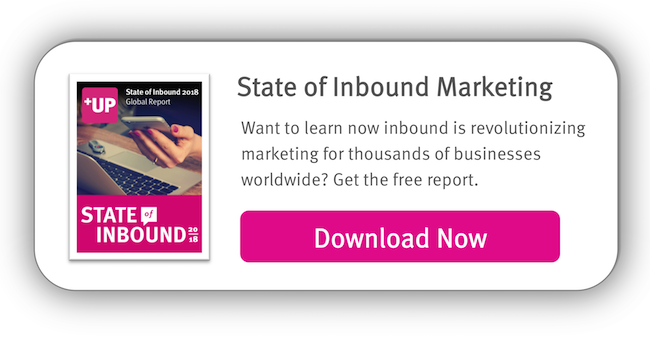The art and practice of content marketing has become an important trend in the last few years. You’ve probably heard this term used in conjunction with SEO (search engine optimization), inbound marketing and social media marketing. But what exactly do we mean by content marketing ?
What is content marketing?
Here is a definition from the Content Marketing Institute:
“Content marketing is a strategic marketing approach focused on creating and distributing valuable, relevant, and consistent content to attract and retain a clearly-defined audience — and, ultimately, to drive profitable customer action.”
Using content for marketing is not a completely new idea. It’s the way we think about content (or define it) that has changed, along with the tools we can use to make it available to others. As the Internet and social media become ever more important to people’s lives, the way they seek and gather information changes. Putting your content out in the world where people are looking for it helps them find you.
Why would you want to do that? Because you’re an expert and your customers need to know that. No matter what business you’re in, chances are you got into it because you’re an expert in an area or because you saw a chance to make a difference, and you’ve become an expert as a result of your hard work. By sharing your knowledge with your prospects, you’re not only improving your reputation, you’re helping your prospects in their journey to learn something new.
In fact, 88 percent of B2B marketers reported using content marketing as a part of their online marketing strategy.
Why you should use content marketing
If building your reputation and sharing knowledge aren’t enough to convince you to consider upping your content marketing game, here are five preemptive reasons you should do it.
1. Old-style advertising is dead.
You may have heard this one before and thought “hog-wash.” But listen, I’m not trying to jump on a bandwagon here, and probably not saying what you think I am saying, so before you dismiss this, hear me out. Promotional ads aren’t enough anymore. Banner ads have been losing their efficacy rates for years. (Bannersnack).
The average click through rate of display ads across all formats and placements in the USA is now just 0.07%. (Display Benchmarks tool). On the newspaper end, total ad revenue in 2013 was 49% lower than it had been a decade earlier, according to the “State of the News Media 2014” study by the Pew Research Center.
You have to bring more to the table. No one method will be enough to build your brand, develop leads and position your company in the minds of prospects. You need to offer something of value and, in the information age, that means — you guessed it — information.
Ads may help drive traffic to your website, or your storefront, but will that be enough? Probably not. To convert them into leads or sales, you need content that tells a story or promotes knowledge. Use advertising to boost your content, and you’ll be playing a different game.
2. Selling is dead.
Yep, another one that’s probably making you groan. But again, the way selling used to work — with cold calling and sales reps pushing a product that customers had never heard of — isn’t how it’s done anymore. Consumers are out actively seeking information to help them solve their problems and to understand what questions to ask before considering a new purchase. They have their own agendas, pace and options for how they want to receive that information. They don’t want anyone to “sell” to them. (Inc.)
Instead, modern sales reps need to form meaningful relationships with consumers – to provide information and guidance. If you wait for the phone to ring before you to start educating them about market differentiators and what they need to know to make a choice, you’re too late. Your competitors have probably already framed customer perspectives by offering information about the questions they should be asking.
In B2B, especially, 57% of a typical purchase decision is made before a customer even talks to a supplier. (Corporate Executive Board).
Content marketing can help you generate thought leadership, an important part of ensuring that your company makes it into your prospect’s frame of reference for consideration, and can help you get information in front of your audience at the right stages in the buying cycle.
3. Old-style SEO is dead.
Did I get you again? That’s right…the old-fashioned form of stuffing your web pages with keywords and paying for links on other websites no longer impresses Google. What matters is content. Good content that makes people stay on your site and click through to more pages. (Once upon a time, we called this “sticky” content). Organic search engine ranking is increasingly about creating content that people actually want to read, and it’s measured by how long they stay on your website doing just that.
That’s not to say you should ignore keyword research… you still need to create your content based on the search terms your audience uses, not the ones your internal organization uses, or it will be virtually invisible to your potential audience. However, optimizing your website needs to be less about tracking keywords and rankings, and more about engaging visitors once they've landed on your website. For that, you need valuable content that impresses and inspires. High converting landing pages are what matter.
4. Google is dead.
Just kidding. But creating a website primarily for Google has lost its potency. Don’t focus your efforts on “gaming” Google to appear at the top of search results. Furthermore, what is “top” for each person is different, based on location, past search history, and even the type of device being used. There’s no “one right page structure” or “one right keyword” that will win you the Google prize. It’s really all about knowing your audience, planning content that appeals to each of your target “personas” and offering what they need to make their experience on your website, or with your brand (whether in a store, event or elsewhere) meaningful. And then you need to make sure your content is where your audience is – whether that’s on Google, Facebook, LinkedIn, Twitter, or at tradeshows, industry journals or online media. Promoting your content through social media, PR and yes, even paid advertising, is an essential element of content marketing.
5. Print content is NOT dead.
(Did I throw you a curve?) In fact, content in all forms, offline, offline, mobile, video, TV, is in more demand than ever. Print is still a top-of-funnel medium. Print isn’t dead, experts say. According to the AMA, “Print circulations are down, but in many cases, that means that publications’ readership has been culled to only the most engaged, which is a desirable trait, from an advertising standpoint.” On the other hand, Cash4Toners promotes print saying "the print experience is uninterrupted" and "not subject to ad blockers."
Check out the infographic here.
What’s even more in vogue than Vogue is customized content (content for a specific audience) produced by businesses. (Money CNN). Businesses are once again finding increasing success in printing their own publications, and, in fact, customers are responding to print simply because it’s so unusual to receive it now.
Plus, according to Allbusiness.com, 56 percent of all consumers trust print marketing more than any other advertising method.
And the majority of Millennials (45%) in a 2014 survey by Androit Digital say a combination approach of digital ads and traditional ad channels is equally or more effective in influencing their brand decision making, compared to either as a standalone channel. Furthermore, 3 out of 4 small businesses use both print marketing and online efforts combined. This strategy usually offers the best return on investment and gets the best response rates.
So what do you think?
Is content marketing in your plans? What made you decide to do it? Leave a comment or click to tell us what you think.

